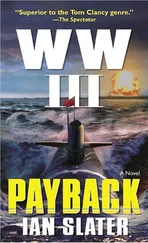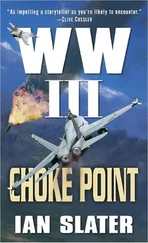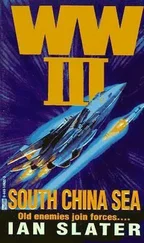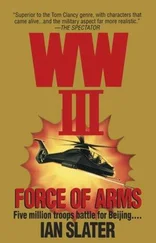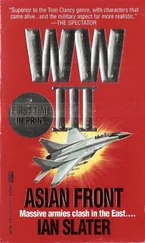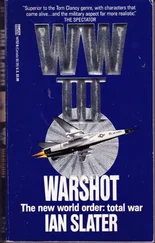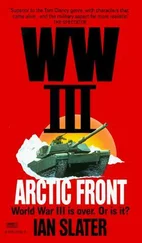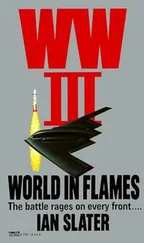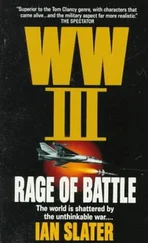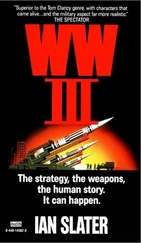Peter Norton, harboring the chilling possibility of having to drive his 6,000-pound cargo-carrying Hummer in the vicinity of the rebel Russian tanks, was in the grip of an ice-cold fear. Having been demoted from full-combat-marine status to combat driver, he was depressed enough already without having to think about being thrust into or anywhere near a heavily defended enemy position. He had begun experiencing the chest-gripping, profuse-sweating, “I’m going to die” anxiety attacks a few months before. Out of concern for his own well-being and as a machine gunner aboard one of the MEU’s ground team’s armored Hummers, he had dutifully reported to sick bay, and the panic attacks had quickly been brought under control by a daily dose of ten milligrams of the anti-anxiety medication Paxil. But he had not been sufficiently alert to the fact that the navy, into whose organization the marines were integrated, remains the most tradition-bound of the armed services. As well as being the most “senior” service, it remains deeply suspicious of “shrinks,” whether they be psychologists or psychiatrists. In Peter Norton’s case, the navy was even more rattled by the acronym PIUS — possible instability under stress.
Peter hadn’t told any of his marine buddies about his connection with Freeman. Nor had he tried to use his father or Freeman, who it was unlikely even knew he was on the Yorktown, to pull strings to overturn the damning psychological profile that he was sure had cost him promotion and a reduction in pay. When he heard the criticism of Freeman aboard Yorktown , Peter was even more convinced that he had done the right thing in not owning up to any connection to the man whom most of Peter’s marine buddies resented having been placed in overall command of the MEU. But he did regret reporting the panic attacks. Though nothing was said to him directly, Norton found his responsibilities further decreased, and when the mission was announced, his official designation was no longer combat driver but standby support driver. And the only reason he had been assigned this job as a food-supply driver in Colonel Tibbet’s battalion HQ was that the armed forces were spread so thinly in the far-flung world war against terrorism that all trained personnel, including drivers, were scarce.
In the tightly packed, claustrophobic, fuel-laden atmosphere on the vehicle decks he was finding it difficult to breathe. He felt the old, chest-gripping fear rising in him and, as a psychological diversionary tactic, began checking his stack of dark brown, plastic-wrapped MAMEs, marine meals, which, as cold rations designed out of the marine battle lab in Quantico, Virginia, were far superior to the usual MREs, meals ready-to-eat, which troops frequently threw away because what the MREs provided in nutrients, they lacked in taste. Colonel Tibbet passed by, the tall, lean marine commanding officer, nodding to Norton on his way. Then he stopped and turned on his heel. “Norton? Peter Norton? Right?”
“Yes, sir,” answered Peter, with some timidity.
“You were the guy who suggested we stock up on — what was it, Mars bars, for the next combat ration?”
“Yessir,” replied Peter obediently, then typically added, “but it wasn’t my idea, sir. It was General Freeman’s.”
“Freeman’s?” said Tibbet with obvious surprise. “You know General Freeman?”
“No, sir. Well, not personally, but he sent a memo to the quartermaster general after he’d found out how the Brits on the ships during the Falklands War passed on all their rations and went instead for Mars bars.”
Tibbet was nodding knowingly. “Huh — sugar surge, I guess. Makes sense. But General Freeman should’ve recommended Hershey bars.”
“Yes, sir.”
Tibbet moved on toward the TOW anti-tank-missile-loaded Humvees that would be airlifted by one of the Yorktown ’s Super Stallions, unless there was interference in the assemblage of the air force from the Yorktown by foreign aircraft. In such a case the Yorktown ’s marine V-STOL Harriers would provide a potent protective screen for the MEU force. The Harriers were tasked with going in to destroy what the MEU S-2 intel chief had been convinced by McCain ’s signal exploitation space and by HUMINT routed to the McCain by the U.S. Embassy in Beijing and the Shanghai trade office was a Russian complex near Lake Khanka and its marshlands.
There was a problem, however, with the SATPIX. It showed an H-shaped building but no anti-aircraft emplacements, and a mobile AA battery was everyone’s nightmare on such an op — that is, one of the nightmares.
It was General Freeman’s comment about the unusual number of airborne birds cluttering the satellite images of the area that had first aroused the MEU’s intel chief’s interest. Freeman had pointed out to him that the fact of the birds constantly rising, circling, and landing on the lake—“neurotically,” Freeman had said — pointed to a terrestrial anomaly that “must be frightening the shit out of the cranes, et cetera,” causing them to take flight much more often than what an ornithological report confirmed was normal. If there was an earthquake, Freeman had told the officers’ mess on Yorktown , the entire area would liquefy.
“It’s liquefied already, General.”
“True. What I meant, Captain, was that even the wooded areas that we might rely on would simply become a vast slurry. Awful for armor.” What spooked the marines’ intel officer most was the sheer volume of bird traffic being monitored in the “blue tile country,” the blue-tiled inner sanctum of the U.S.S. McCain ’s signal exploitation space compared to what was normal. “Neurotic,” he decided, was an apt description of the avian activity.
Now Colonel Tibbet was inspecting the line of Stinger-mounted Humvees. Two swivel-mounted boxes on each one of the ten vehicles contained four anti-aircraft missiles, eight Stingers in all, a potent defense system by any measure. After a quick inspection of these units, he walked quickly past the supply Humvees which, because his mission was not an amphibious-landing op as such, would have to be delivered, together with extra fuel bladders, by helo sling and would have to carry the total supply load, from prepackaged meals to gas masks, a job usually shared by the marines’ five-ton trucks which the Yorktown ’s big landing craft ferried ashore after the troops disembarked. But this KITDO, or kick-in-the-door operation, as the troops called it, to Lake Khanka was to be confined to airlift only. Tibbet was about to leave the vehicle deck and walk up one of the many internal ramps between decks to the big hangar, when he paused and called back to Peter Norton, “How’d you know it was General Freeman who sent that memo?”
“My dad told me, sir.”
“Your dad ?”
“Yes, sir. He used to be the general’s 2IC.”
“Huh!” said Tibbet, wondering why the son of a G-2 hadn’t risen any higher than a driver. No shame in it, but not what you’d expect.
General Freeman’s stentorian voice coming on the Yorktown ’s public address system sounded as if it was coming from on high, its tone brooking neither interruption nor contradiction.
“Shit,” opined one marine. “Sounds like Moses.”
This is no apology, Peter Norton told himself. This was an old blood ’n’ guts Georgie Patton speech. And what made it doubly impressive or eerie, depending on the audience of two thousand marines scattered throughout the ship, was Freeman’s likeness on the monitors to the controversial World War II general.
“Reincarnation,” said a machine gunner.
“Bullshit,” responded another. “What d’you think, Norton?”
Читать дальше

